Recent Posts
Understanding Structural Damage from Fire and Smoke
4/17/2024 (Permalink)
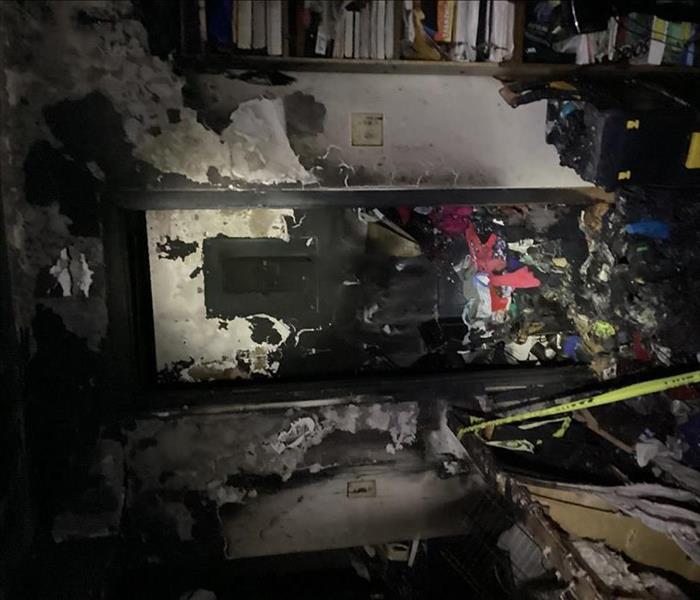 In this blog, we will explore the impact of fire and smoke on the structural integrity of a building.
In this blog, we will explore the impact of fire and smoke on the structural integrity of a building.
Experiencing a fire in your home is a traumatic event that can cause significant structural damage. Understanding how fire and smoke damage can affect the structure of your property is crucial for effective fire damage remediation. In this blog, we will explore the impact of fire and smoke on the structural integrity of a building and provide valuable insights on what to do if you experience structural fire damage.
How Fire and Smoke Damage Cause Structural Damage
- Direct Fire Contact: When a fire spreads throughout a building, it can directly affect the structural components such as walls, floors, ceilings, and beams. Prolonged exposure to high temperatures weakens these materials, compromising their strength and stability.
- Thermal Expansion and Contraction: The extreme heat generated by a fire causes materials to expand, putting stress on the structural elements. As the fire is extinguished, the rapid cooling causes contraction, which can further damage weakened components.
- Weakening of Load-bearing Structures: Fire can weaken load-bearing walls, beams, and columns, compromising the overall structural integrity of the building. This can lead to structural collapse if not properly assessed and repaired.
- Smoke and Soot: Smoke and soot, generated by burning materials, can penetrate the structure, settling on surfaces and within void spaces. These particles can corrode metal, stain surfaces, and emit harmful odors. Additionally, the acidity in smoke can accelerate the deterioration of materials over time.
Responding to Structural Fire Damage
- Ensure Safety: Before entering a property that has experienced a structural fire, ensure that it has been deemed safe by professionals. Fire damage restoration experts, such as SERVPRO®, can evaluate the safety of the structure and provide guidance.
- Document the Damage: Take detailed photographs or videos of the structural fire damage, including affected areas and individual components. This documentation will be essential for insurance claims and fire damage restoration processes.
- Secure the Property: If the structural damage is severe, make sure to secure the property to prevent further damage or potential theft. Board up broken windows and doors, and cover openings in the roof to protect against the elements.
- Professional Assessment: Contact a reputable fire damage restoration company to assess the extent of the structural damage. Trained technicians will conduct a thorough inspection, identifying compromised areas and developing a comprehensive restoration plan.
- Structural Stabilization: In cases of significant structural damage, stabilization may be necessary before the restoration process can begin. This may involve temporary supports or shoring to ensure safety during repairs.
- Restoration and Repairs: Once the structure is safely stabilized, the fire damage restoration process can start. Skilled professionals will remove debris, clean and sanitize affected surfaces, repair or replace damaged structural elements, and restore the property to its pre-fire condition.
Structural damage from fire and smoke can have a lasting impact on the safety and stability of your property. Understanding the causes and effects of fire damage on the structure is vital when responding to a fire incident. Promptly documenting the damage, securing the property, and seeking professional assessment are crucial to ensure a safe restoration process. Partnering with a trusted fire damage restoration company like SERVPRO will ensure that the structural fire damage is addressed comprehensively and efficiently, helping you restore your home to its pre-fire condition.
The SERVPRO® Mold Remediation Process: Step by Step
3/13/2024 (Permalink)
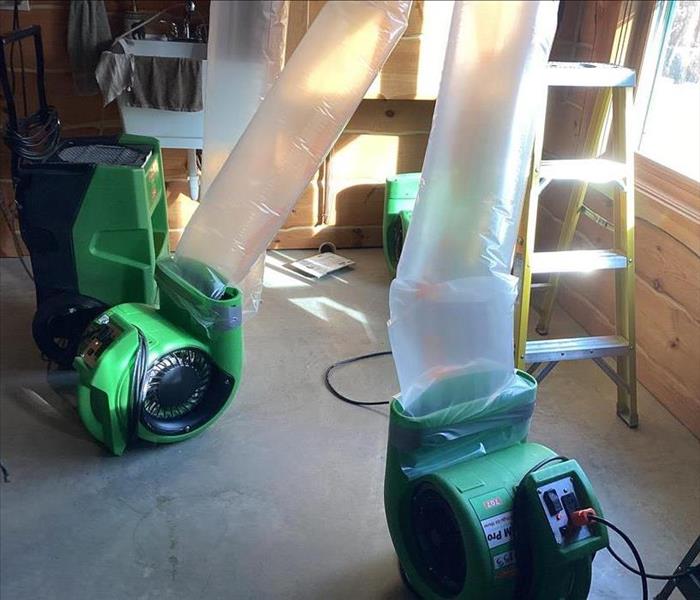 It's essential to understand the process of mold remediation and how it can effectively remove and prevent the reoccurrence of mold growth.
It's essential to understand the process of mold remediation and how it can effectively remove and prevent the reoccurrence of mold growth.
When it comes to mold damage in your home or business, it's essential to understand the process of mold remediation and how it can effectively remove and prevent the reoccurrence of mold growth. SERVPRO®, a leading provider of mold remediation services, follows a comprehensive seven-step process to ensure the thorough removal and restoration of mold-damaged areas. In this blog, we will explore the SERVPRO Mold Remediation Process step by step.
Step 1: Emergency Contact
The mold cleanup and restoration process begins with a simple phone call to SERVPRO. When you reach out to them, their representative will ask a series of questions to assess the resources, equipment, and personnel required to address your specific mold damage situation.
Step 2: Inspection and Mold Damage Assessment
Once they have gathered the necessary information, the SERVPRO team will conduct a thorough inspection of the affected area. Through advanced technologies and expertise, they can detect both visible and hidden mold growth and identify the root causes of the mold problem.
Step 3: Mold Containment
To prevent the spread of mold spores during the remediation process, the SERVPRO® team uses various containment procedures. Negative air chambers and negative air pressure are established to isolate the contaminated areas, minimizing the risk of cross-contamination.
Step 4: Air Filtration
SERVPRO® professionals employ specialized filtration equipment, including air scrubbers and HEPA vacuums, to capture microscopic mold spores from the air. By utilizing these powerful tools, prevents the further spread of mold spores throughout your property.
Step 5: Removing Mold and Mold-Infested Materials
Once the containment and air filtration systems are in place, the team starts the process of mold removal. They use antifungal and antimicrobial treatments to eliminate mold colonies and prevent new colonies from forming. In severe cases of mold damage, mold-infested porous materials like drywall and carpeting may need to be removed and properly disposed of.
Step 6: Cleaning Contents and Belongings
Mold can not only affect the structure of your property but also damage your belongings. The SERVPRO® team is trained to clean and disinfect your furniture, decorative items, clothing, and other restorable items affected by mold. They utilize a variety of cleaning techniques to ensure the removal of mold and its odors.
Step 7: Restoration
The final step in the SERVPRO Mold Remediation Process involves restoring your property to its pre-mold damage condition. Depending on the extent of the damage, this may include minor repairs like replacing drywall and painting or more significant reconstruction work. SERVPRO® is equipped to handle all aspects of the restoration process, ensuring your property is restored to its original state.
By following this comprehensive seven-step process, SERVPRO ensures that mold damage is effectively addressed and your property is restored to a clean and healthy environment. Their trained professionals use advanced techniques and equipment to remove mold, prevent its reoccurrence, and restore your property efficiently.
If you are facing mold damage in your home or business, contact SERVPRO to benefit from their expertise in mold remediation. Through their meticulous process, they will effectively fix mold damage and help you regain a safe and healthy living or working environment.
Remember, it's important to address mold damage promptly and seek professional assistance to ensure it is properly handled. Let SERVPRO take care of your mold remediation needs and restore your property "Like it never even happened."
Should I Salvage or Replace My Belongings After Water Damage?
2/14/2024 (Permalink)
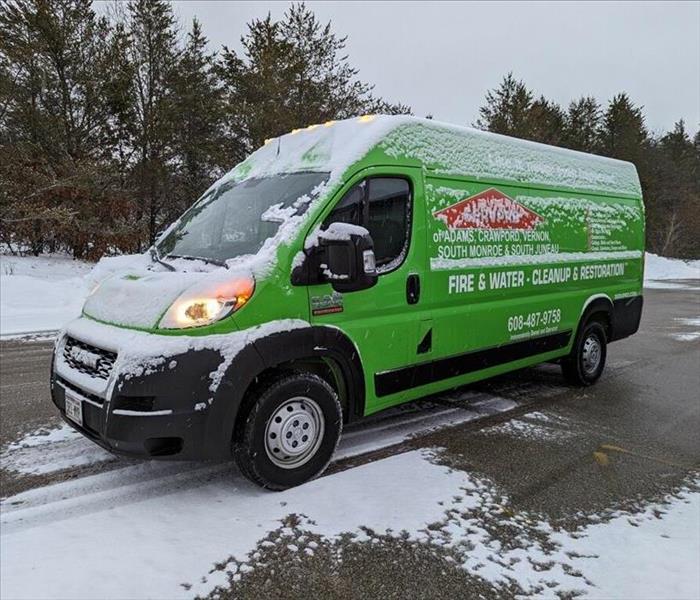 Contact us for professional guidance and restoration services to salvage as much as possible from your water-damaged property!
Contact us for professional guidance and restoration services to salvage as much as possible from your water-damaged property!
Water damage can be a distressing event, impacting your property and belongings. When faced with the aftermath of water damage, one of the important decisions homeowners face is whether to salvage or replace the affected items. In this blog, we'll delve into some factors to consider when determining whether salvaging or replacing items is the best course of action after water damage strikes.
1. Severity of Damage
Assess the severity of the damage incurred by the items. Some items may sustain minimal damage and can be salvaged through proper cleaning and restoration techniques. Others may suffer irreparable damage, especially if they've been submerged in water for an extended period or are highly porous materials like mattresses or particleboard furniture.
2. Risks and Contamination
Consider the potential risks associated with salvaging certain items. Porous materials that have been contaminated by sewage water or have developed mold growth pose hazards and are often unsalvageable. Items that can't be thoroughly cleaned and disinfected may compromise indoor air quality or pose risks upon use.
3. Sentimental and Monetary Value
Evaluate the sentimental or monetary value of the items affected by water damage. Items with sentimental value, such as family heirlooms or irreplaceable personal belongings, may warrant efforts for restoration, even if the damage is significant. Conversely, items with a lower replacement cost might be more cost-effective to replace than restore.
4. Restoration Feasibility and Cost
Consider the probability of restoration and associated costs. Professional restoration services, like those offered by SERVPRO of La Crosse County, can salvage many items through specialized techniques. However, extensive damage or higher restoration costs compared to replacement might influence the decision.
5. Time Considerations
Factor in the time required for restoration versus replacement. While restoration may take time, especially for intricate or valuable items, it can often be a worthwhile investment. Conversely, immediate replacement might be more practical for easily replaceable or less valuable items.
The decision between salvaging and replacing items after water damage isn't always straightforward. It involves weighing several factors, including the extent of damage, risks involved, sentimental value, feasibility of restoration, and associated costs. Often, a combination of salvaging and replacing various items offers the most practical solution.
At SERVPRO of La Crosse County, our expert technicians specialize in assessing water-damaged items and employing advanced restoration techniques. Contact us for professional guidance and restoration services to salvage as much as possible from your water-damaged property!
The 5 Most Common Severe Weather Threats in Wisconsin
1/13/2024 (Permalink)
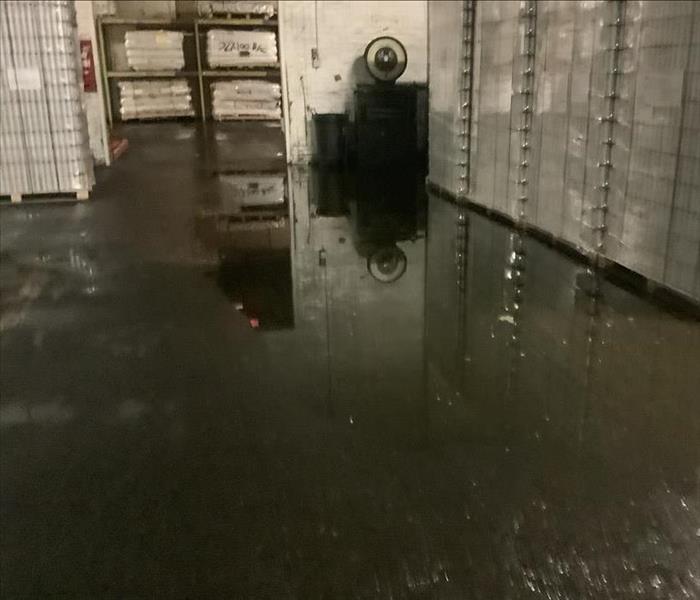 If your property faces severe weather-related damage, our SERVPRO® team is available 24/7 to provide professional restoration services!
If your property faces severe weather-related damage, our SERVPRO® team is available 24/7 to provide professional restoration services!
Wisconsin's diverse climate brings a range of severe weather threats, and being prepared for any scenario is crucial. In this blog, we'll delve into the 5 most common severe weather events in Wisconsin and provide detailed insights to help you protect your home and loved ones.
Severe Thunderstorms
Wisconsin frequently experiences severe thunderstorms, bringing strong winds, heavy rainfall, hail, and lightning. Take proactive measures by securing outdoor items, trimming trees, and staying informed through weather alerts. Designate a safe meeting place and ensure your family knows the emergency plan.
Tornadoes
Tornadoes are a significant concern in Wisconsin, especially during the spring and summer months. Develop a tornado safety plan, designate a safe room, and stay tuned to weather forecasts for timely tornado warnings. Practice tornado drills with your family to ensure everyone knows the proper response.
Winter Storms
Harsh winter weather, including heavy snowfall and icy conditions, is common in Wisconsin. Prepare for winter storms by stocking up on essentials, insulating your home, and having a reliable heating source. Keep driveways and walkways clear to prevent accidents, and stay updated on road conditions.
Blizzards
Blizzards bring a combination of heavy snowfall, high winds, and low visibility. Be ready for blizzard conditions by creating an emergency kit, winterizing your home, and avoiding unnecessary travel during severe winter weather. Keep communication devices charged and have an alternative heating source in case of power outages.
Derechos
Derechos are powerful, straight-line windstorms that can cause widespread damage. Secure loose items, reinforce windows and doors, and have a plan in place for power outages during derechos. Familiarize yourself with local evacuation routes and shelters.
Preparing for Wisconsin's Severe Weather
Stay Informed
Regularly check weather forecasts and alerts. Invest in a NOAA Weather Radio for immediate updates during severe weather events. Sign up for local emergency alerts to receive timely information.
Create a Comprehensive Emergency Kit
Assemble a well-stocked emergency kit with essentials like water, non-perishable food, first aid supplies, flashlights, and important documents. Customize the kit based on the specific needs of your family.
Prepare Your Home
Regularly inspect your home for vulnerabilities and make necessary repairs. Install storm shutters, reinforce doors and windows, and consider investing in a backup power source. Have an emergency contact list readily available for quick communication.
Wisconsin's varied climate brings a mix of severe weather threats, but with detailed preparation, you can navigate these challenges with confidence. Stay tuned to the SERVPRO of La Crosse County blog for more insights, safety tips, and expert advice. And remember, if your property faces severe weather-related damage, our SERVPRO® team is available 24/7 to provide professional restoration services!
How To Prevent and Respond to Kitchen Fires
12/13/2023 (Permalink)
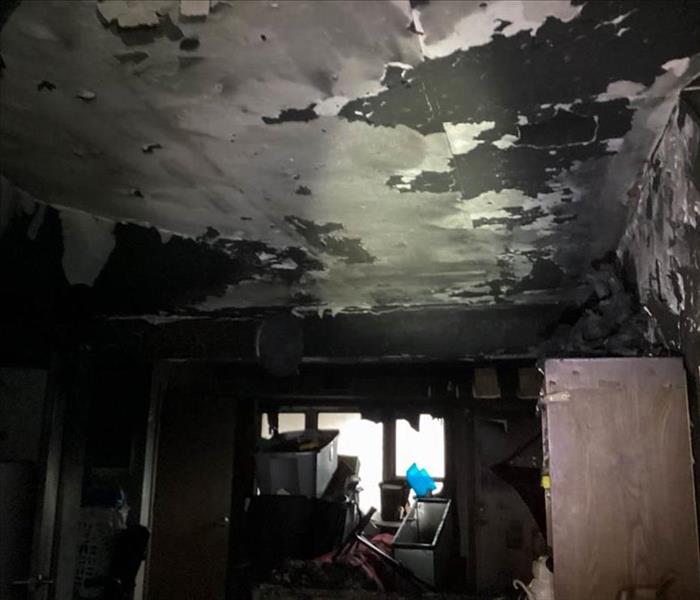 The kitchen is the heart of the home, but it's also one of the most common places for household fires to start.
The kitchen is the heart of the home, but it's also one of the most common places for household fires to start.
The kitchen is the heart of the home, but it's also one of the most common places for household fires to start, so it's essential to prioritize kitchen safety. In this blog, we'll share valuable tips on how to prevent kitchen fires and what to do if one occurs.
Preventing Kitchen Fires
Never Leave Cooking Unattended
One of the leading causes of kitchen fires is leaving food unattended on the stove or in the oven. Stay in the kitchen when cooking, and if you must step away, turn off the heat.
Keep Flammable Objects Away
Ensure that flammable objects such as dish towels, oven mitts, and paper towels are kept away from the stove, oven, and other heating appliances.
Install a Smoke Detector
Make sure your kitchen is equipped with a functioning smoke detector. Regularly check the batteries and replace them as needed.
Fire Extinguisher
Have a fire extinguisher in your kitchen and know how to use it. It can be a lifesaver in case of a small fire that can be contained.
What to Do If a Kitchen Fire Occurs
- Stay Calm: In case of a fire, the first rule is to stay calm. Panic can make the situation worse.
- Turn Off the Heat: If the fire is in a pot or pan, turn off the heat source. This can prevent the fire from spreading.
- Never Use Water on Grease Fires: For grease fires, never use water as it can cause the flames to flare up. Instead, cover the fire with a metal lid or use a fire extinguisher.
- Evacuate Safely: If the fire is spreading and cannot be controlled, evacuate the kitchen and close the door to contain the fire. Call 911 immediately.
- Do Not Attempt Heroics: While it's important to stay safe, never attempt to be a hero by trying to extinguish a large or spreading fire on your own. Leave it to the professionals!
Kitchen safety should always be a priority. By following these tips, you can significantly reduce the risk of kitchen fires and respond effectively if one occurs. Stay vigilant, keep your kitchen safe, and remember that your safety and the safety of your loved ones always come first.
If you ever experience a kitchen fire and need professional assistance in La Crosse, WI, contact SERVPRO of La Crosse County for expert fire damage restoration. We're here to help you get your home back to its pre-fire condition!
Professional vs. DIY Mold Removal
11/9/2023 (Permalink)
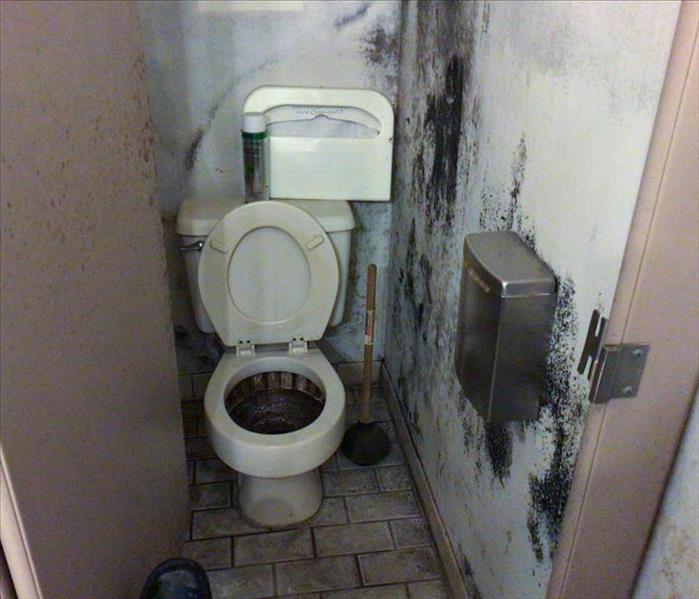 DIY projects can be satisfying, and they can save you money. However, mold removal is not always as straightforward as it may seem.
DIY projects can be satisfying, and they can save you money. However, mold removal is not always as straightforward as it may seem.
Homeowners here in La Crosse, WI, often face mold challenges due to our climate and environmental factors. While many people opt for DIY mold removal, it's essential to know when it's time to call in the professionals. In this blog, we'll help you make an informed decision about tackling mold issues in your home.
The Attraction of DIY Mold Removal
Mold removal is a common concern for homeowners in La Crosse, WI. Many people are tempted by the idea of handling it themselves. DIY projects can be satisfying, and they can save you money. However, mold removal is not always as straightforward as it may seem.
When DIY Mold Removal Works
For minor mold problems in small, non-porous areas, DIY solutions can be effective. Here are some situations where DIY mold removal may suffice:
- Surface Mold on Non-Porous Materials: If you discover mold growth on easy-to-clean, non-porous surfaces like tiles or glass, you can often remove it with commercial mold cleaners.
- Limited Mold Growth: If the affected area is small (less than 10 square feet) and the mold growth is superficial, DIY removal can be appropriate.
When to Call the Professionals
While DIY solutions have their place, there are circumstances where professional mold remediation becomes crucial:
- Extensive Mold Growth: When mold covers a large area, spreads through hidden spaces, or infiltrates building materials, it's time to call in the experts.
- Hidden Mold: Mold often lurks in hidden spaces, such as within walls, under flooring, or in HVAC systems. Professionals have the tools and expertise to locate and remove it.
- Recurring Mold Problems: If you've previously attempted DIY mold removal, and the mold keeps coming back, it's a sign of an underlying issue that professionals can identify and address.
The Benefits of Professional Mold Remediation
Professional mold remediation offers several advantages:
- Thoroughness: Professionals conduct comprehensive inspections and address the root causes of mold growth.
- Safety: They have the necessary protective gear and follow industry best practices to ensure safety.
- Expertise: Professionals are trained and experienced in handling mold removal effectively.
- Prevention: They can advise on preventive measures to reduce the likelihood of future mold issues.
Protecting Your Clothes, Belongings, and Furniture
In addition to the potential structural damage, mold can also wreak havoc on your personal belongings, including clothes and furniture. Mold spores can settle on fabrics, leather, wood, and upholstery, leading to unsightly stains, musty odors, and deterioration. Dealing with mold on your clothes, cherished belongings, or furniture can be challenging, as it often requires more specialized cleaning techniques than simple surface mold removal. When mold extends its reach to your personal items, it becomes even more vital to consider professional mold remediation to ensure the thorough and safe removal of mold from your living space.
While DIY mold removal can be suitable for minor issues, it's essential to recognize when it's time to bring in the professionals. In La Crosse, WI, where mold problems can be persistent, turning to experts like SERVPRO® of La Crosse County ensures a thorough, safe, and effective solution. Don't hesitate to contact us when you need professional mold remediation assistance. We're here to help you protect your home from mold-related challenges.
DIY Tips for Preventing Water Damage in Your Wisconsin Home
10/9/2023 (Permalink)
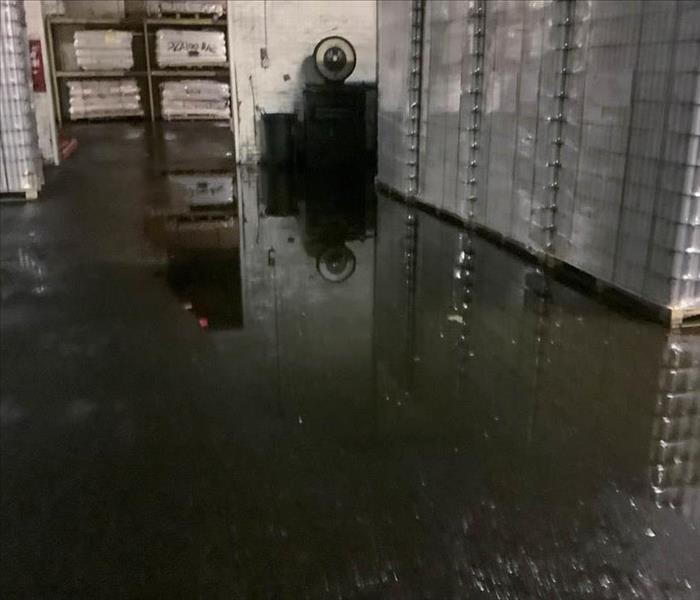 By implementing these DIY tips, Wisconsin homeowners can proactively protect their homes from water damage.
By implementing these DIY tips, Wisconsin homeowners can proactively protect their homes from water damage.
In Wisconsin, where rain, snow, and sudden weather changes are common, preventing water damage in your home is essential. We understand that many homeowners prefer a proactive approach to protect their properties. In this blog, we'll provide you with valuable DIY tips and insights to help safeguard your Wisconsin home from water damage.
Maintain Your Gutters and Downspouts
Wisconsin's varying weather patterns mean that proper gutter and downspout maintenance is crucial. Clean your gutters regularly to prevent clogs that can lead to water overflow and potential damage to your roof, siding, and foundation. Extend downspouts away from your home's foundation to direct rainwater away from the basement.
Check and Seal Windows and Doors
Inspect the seals around your windows and doors regularly. Apply weatherstripping or caulk to seal any gaps or cracks to prevent water from infiltrating your home during heavy rains or snowstorms. Proper sealing not only prevents water damage but also improves energy efficiency.
Landscape with Proper Grading
Ensure that your yard's slope and landscaping promote proper drainage away from your home's foundation. This prevents water from pooling around your house, which can lead to basement flooding and foundation issues. Adjust the grading as needed to encourage water to flow away from your home.
Maintain Your Roof
Regularly inspect your roof for missing shingles, damaged flashing, or signs of wear and tear. Promptly address any issues to prevent roof leaks during heavy rains or snow. A well-maintained roof is your first line of defense against water damage.
Install a Sump Pump
In areas prone to basement flooding, like parts of Wisconsin, consider installing a sump pump. A sump pump can help remove excess groundwater and prevent basement flooding, especially during spring thaws and heavy rains.
Monitor Indoor Humidity
Wisconsin's climate can lead to indoor humidity fluctuations, which can contribute to water damage and mold growth. Use a dehumidifier to maintain indoor humidity levels between 30-50%. This can help prevent condensation and moisture-related issues.
Regularly Inspect Plumbing
Inspect your plumbing for leaks and drips regularly. Even small leaks can lead to significant water damage over time. Address any plumbing issues promptly, and consider installing water leak detection devices to alert you to potential problems.
By implementing these DIY tips, Wisconsin homeowners can proactively protect their homes from water damage and maintain a safe, dry living environment. Remember that regular maintenance and vigilance are key to preventing water damage in your beloved Wisconsin property. If you ever encounter water damage that is beyond your DIY capabilities, don't hesitate to contact SERVPRO of La Crosse County for professional assistance. We're here to help Wisconsinites restore their homes to their pre-damage condition.
Preparing Your Boat or RV for Storm Season: Storage and Safety Tips
9/11/2023 (Permalink)
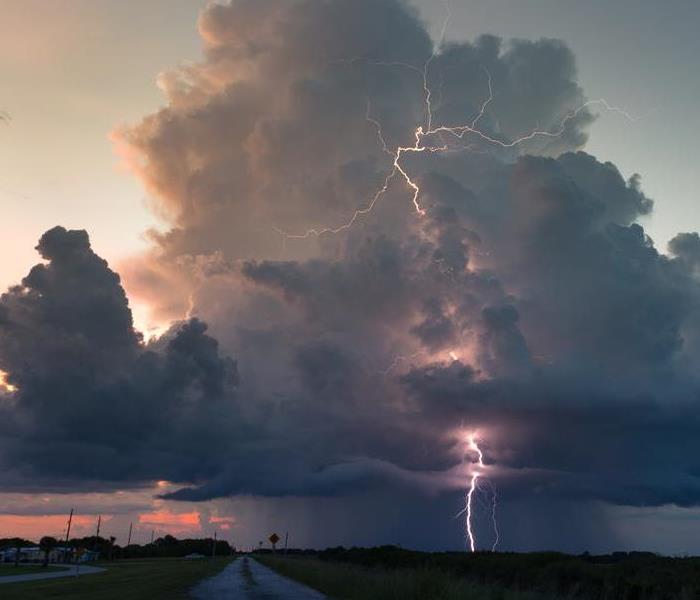 Prepare your boats and RV during storm season
Prepare your boats and RV during storm season
Storm season can be a challenging time for boat and RV owners. Strong winds, heavy rains, and potential flooding pose a significant risk to these valuable investments. To ensure the safety and protection of your boat or RV, it's essential to take proactive measures before the storm hits. In this blog post, we will provide you with storage and safety tips to help you prepare for storm season.
Find Safe Storage
Finding suitable storage for your boat or RV is crucial during storm season. Consider the following options:
- Indoor storage: If available, storing your boat or RV indoors provides the highest level of protection against storms, including wind, rain, and potential debris damage.
- Covered storage: If indoor storage is not an option, look for covered storage facilities to protect your vehicle from direct exposure to the elements.
- Secure your property: If storing at home, choose a location away from trees, power lines, or any other potential hazards. Use sturdy tie-down straps and anchors to secure your boat or RV.
Perform Maintenance and Inspections
Before storing your boat or RV for storm season, it's essential to conduct thorough maintenance and inspections:
- Check for leaks: Inspect your vehicle's roof, windows, doors, and any other potential areas where water could enter. Repair any leaks promptly.
- Secure loose items: Remove any loose items inside your boat or RV that could become projectiles during strong winds.
- Trim trees and branches: If storing at home, ensure trees near the storage area are properly trimmed to minimize the risk of falling limbs or debris.
- Test the security system: If your boat or RV has a security system, ensure it is in proper working condition before storing.
Prepare for Power Outages
During severe storms, power outages are common. Taking the following steps will help you deal with a potential power loss:
- Charge batteries: Make sure your boat's battery, RV generator, and any backup power sources are fully charged before the storm.
- Stock up on supplies: Have enough food, drinking water, flashlights, and batteries to last through an extended power outage.
- Consider a backup generator: If you anticipate prolonged power outages, consider investing in a reliable backup generator to power essential appliances and systems.
Review Insurance Coverage
Review your boat or RV insurance policy to ensure you have adequate coverage for storm-related damages:
- Verify coverage limits: Check if your policy covers weather-related damages, including wind, hail, or flooding. If not, consider adding additional coverage.
- Document your possessions: Take photos or videos of your boat or RV, both inside and out, to document its condition before the storm. This documentation will be valuable if you need to file an insurance claim later.
Stay Informed and Follow Safety Guidelines
Stay updated with weather forecasts and follow safety guidelines provided by local authorities. Sign up for weather alerts, register for local weather alerts through mobile apps or email notifications. If your area is at risk of severe storms or flooding, familiarize yourself with evacuation plans and follow the advice of local authorities. Secure loose property. If at all possible , make it possible to store your boat or RV indoors, ensure all loose items are properly secured or removed before the storm arrives. For boat owners, monitor water levels in marinas or docking areas and follow guidance from harbor masters or marina operators.
Preparing your boat or RV for storm season requires careful planning and proactive measures. By finding safe storage, performing maintenance, preparing for power outages, reviewing insurance coverage, and staying informed, you can mitigate potential risks and safeguard your valuable investments. Remember, the safety of yourself and others should always be the top priority. Stay alert, follow safety guidelines, and be prepared for whatever storm season may bring.
What Should I Look for in a Fire Restoration Company?
8/20/2023 (Permalink)
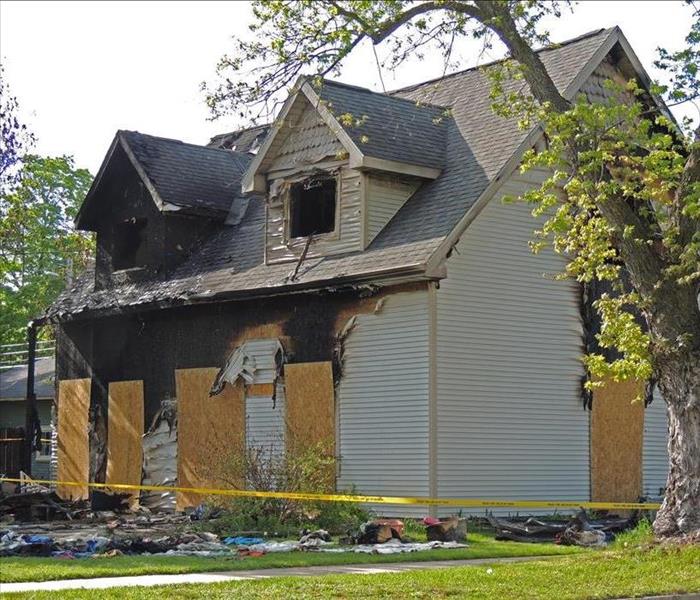 When it comes to fire damage restoration, selecting a reputable, experienced, and qualified company is essential.
When it comes to fire damage restoration, selecting a reputable, experienced, and qualified company is essential.
Dealing with the aftermath of a fire is a daunting and challenging experience. Fire damage can result in significant financial and emotional burdens, and the process of restoring your home can be complicated. Fortunately, you don't have to face these challenges alone. A fire restoration company can help you through this difficult time. In this blog post, we'll discuss what you should look for in a fire restoration company.
Accreditation and License
When choosing a fire restoration company, it's crucial to consider whether they are licensed, certified, and accredited. Accreditation demonstrates that the company follows industry standards and procedures. The Institute of Inspection, Cleaning, and Restoration Certification (IICRC) provides certifications for professionals in the fire and smoke restoration industry.
Experience and Expertise
Experience is critical when it comes to choosing a fire restoration company. A company with several years of experience will have dealt with an array of restoration scenarios, making them well-suited to handle whatever complexities your restoration may entail. Hire contractors that have a team of professionals that possess extensive expertise in the field of fire damage restoration.
Time is of the essence when it comes to fire damage restoration. A reputable fire restoration company should have the availability to respond immediately to your needs. When a fire occurs, the company should send personnel immediately to assess the situation and begin the restoration process as quickly as possible. This promptness helps to mitigate the damage significantly and prevent further losses.
References and Reviews
Reading reviews from past clients and referrals are vital when choosing a fire restoration company. Consider researching and reaching out to family and friends who can offer personal recommendations for service providers in the restoration industry. Online reviews can also provide valuable insight into the quality of service and level of satisfaction previous customers have received.
Equipment and Resources
A fire restoration company should have access to the right equipment, tools, and resources needed to restore your property effectively. Having the resources needed for your specific situation is critical, as each fire damage restoration project presents unique challenges that require specialized equipment.
Customer Service
Choosing a fire restoration company that is committed to providing a positive customer experience is essential. A company that values communication and transparency while providing personalized, responsive service can make the restoration process a lot smoother. Choose companies that are transparent about the repair and restoration process, including how long it will take, and expected costs.
Ensure that the company you choose has various insurance covers to safeguard your property and technicians in the event of an accident. Also, check to see whether the company is licensed for restoration services and the areas they are allowed to serve.
When it comes to fire damage restoration, selecting a reputable, experienced, and qualified company is essential. Their knowledge and expertise can be a critical aspect of reclaiming your property after a disaster. Always take the time to do your research, check reviews and references, and ensure you work with a licensed and insured company. With these factors in mind, you can choose a reliable and trustworthy fire restoration company that can ensure your home is restored to its original state.
Common Water Issues in Commercial Buildings and How to Address Them
7/27/2023 (Permalink)
Water is a vital resource in commercial buildings, serving various purposes such as sanitation, heating, cooling, and general operations. However, commercial buildings are susceptible to various water-related issues that can disrupt daily operations, compromise safety, and lead to costly repairs. In this blog post, we will explore some common water issues in commercial buildings and provide insights on how to address and prevent them effectively.
Plumbing Leaks and Drips
One of the most prevalent water issues in commercial buildings is plumbing leaks and drips. These can occur in pipes, faucets, toilets, or any other plumbing fixtures. Leaks not only waste water but can also cause structural damage, mold growth, and higher water bills. Regularly inspect your plumbing system for any signs of leaks, such as dampness, water stains, or unusual odors. Promptly repair or replace faulty components to prevent further damage and conserve water.
Clogged Drains and Sewer Backups
Clogged drains and sewer backups can disrupt daily operations and pose health hazards in commercial buildings. They can be caused by a buildup of debris, grease, or foreign objects in the plumbing system. Implement regular drain maintenance practices such as routine cleaning, avoiding the disposal of inappropriate materials, and educating occupants about proper waste disposal. If you encounter persistent or severe clogs, consult professional plumbing services to address the issue effectively.
Low Water Pressure
Insufficient water pressure can affect various operations in commercial buildings, including proper functioning of faucets, showers, and equipment that relies on water pressure. Low water pressure can result from issues such as pipe corrosion, clogs, or problems with the municipal water supply. Identify the underlying cause by consulting a professional plumber, who can recommend appropriate solutions such as pipe replacement, installing pressure-boosting devices, or addressing municipal supply issues.
Water Heater Problems
Commercial buildings often have larger water heating systems to meet the demand for hot water. However, water heater problems can arise, including inadequate hot water supply, temperature fluctuations, or leaks. Regular maintenance, including flushing the water heater tank, inspecting heating elements, and checking for signs of corrosion, can help prevent these issues. If problems persist, contact a professional technician to assess and repair the water heater system.
Water Quality Concerns
Water quality is a crucial aspect of commercial buildings, as it impacts the health and safety of occupants. Common water quality concerns include discoloration, odor, and taste issues. These problems can be caused by pipe corrosion, contaminants, or inadequate water treatment systems. Consider installing water filtration or purification systems to ensure clean and safe water for consumption and other purposes. Regularly test the water quality to identify any issues early on.
Sprinkler System Malfunctions
For commercial buildings equipped with fire sprinkler systems, malfunctions can be a significant concern. Issues such as leaking sprinkler heads, faulty valves, or inadequate water supply can compromise the effectiveness of fire suppression systems. Regular inspections, maintenance, and testing of sprinkler systems are essential to ensure they are in proper working condition and comply with fire safety regulations.
Content Cleaning After Water Damage
Additionally, after experiencing water damage in a commercial building, it is essential to address content cleaning thoroughly. Water-damaged items such as furniture, documents, electronics, and inventory require specialized attention to prevent further damage and restore functionality. Content cleaning professionals use advanced techniques and equipment to assess the extent of damage, remove moisture, and mitigate the risk of mold growth or other contaminants. They employ methods such as drying, dehumidification, cleaning, disinfection, and odor removal to salvage and restore water-damaged items whenever possible. Prompt and effective content cleaning ensures the preservation of valuable assets, minimizes business disruptions and promotes a swift return to normal operations.
Addressing common water issues in commercial buildings is crucial to ensure the smooth functioning of daily operations, conserve water, and maintain a safe environment for occupants. Regular inspections, prompt repairs, and preventive measures play a vital role in mitigating these issues. By proactively managing water issues, you can enhance operational efficiency, reduce costs, and promote a healthy and comfortable environment in your commercial building.






 24/7 Emergency Service
24/7 Emergency Service




